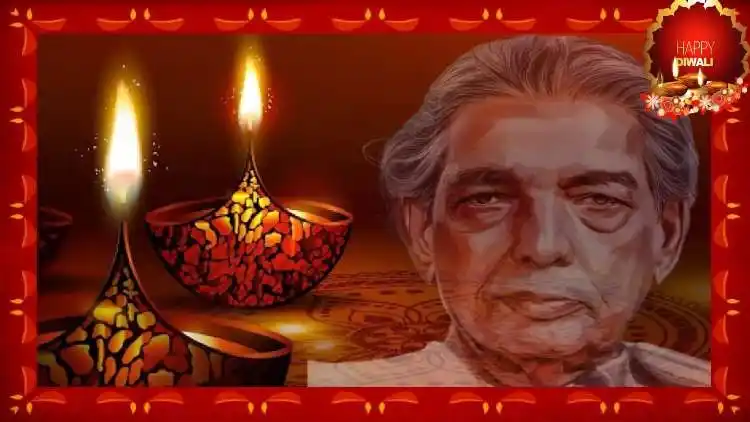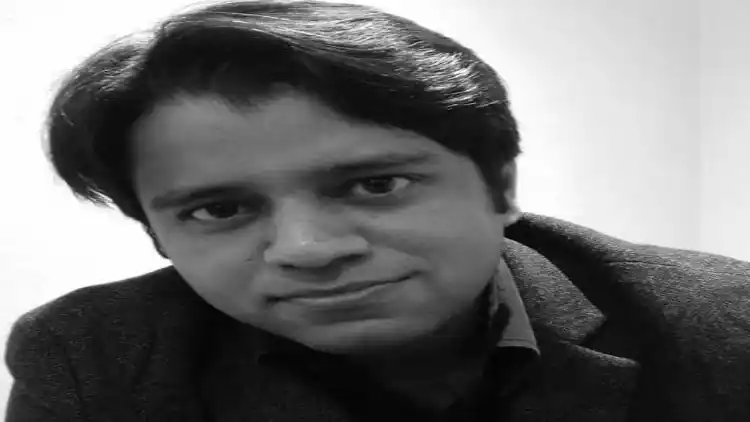
 Saquib Salim
Saquib Salim
In India, it is hard to decipher if the cinema reflects the nation or the nation reflects cinema. Whatever may be the case, a study of films and songs creates a microcosm of India. In recent decades, songs celebrating Indian culture and festivals have given way to party songs. On Diwali eve, one wonders as to how the last song on Diwali was from a 16-year-old movie, Home Delivery: Aapko…… Ghar tak. This trend is in sharp contrast to the scenario of movies from the 1940s and 50s like Rattan (1944), Sheesh Mahal (1950), Paisa (1957), Khazanchi (1958), and Paigham (1959). Just to name these few films that featured songs on Diwali which became very popular.
The Diwali songs also shed light upon another important feature of the Mumbai film industry of yesteryears. The songs on Diwali, a Hindu festival, were mostly collaborative works of Hindus, Muslims, and Sikhs. The idea of the festival was used to bring out feelings of love, hope, despair, patriotism, and social inequalities. Music composers, lyricists, and singers have used Diwali as a metaphor for social, political, and personal realities.
One of my personal favourites of this genre is penned by famous progressive poet Kaifi Azmi and it’s sung by Lata Mangeshkar while music is composed by Madan Mohan for the 1962 film, Haqeeqat. The song of this movie, based on the India-China war of 1962, takes the audience to the homes of Indian soldiers who have sacrificed their lives in the war. In the opening sentence Kaifi Azmi says:
Aayi abke saal Diwali, muh par apne khoon male
Chaaro taraf hai ghor andhera ghar me kaise diip jale
(This year, Diwali has arrived with blood smeared on its face
How can a lamp be lit in a house surrounded by darkness)
Kaifi equated the country with a house. The house that is India - was surrounded by the Chinese soldiers, and thus the darkness. For this reason, we, the Indians, could not think of celebrations. We must free our country from the darkness.
At another point, the song plays;
Raah mein unki jaao ujaalo, ban me jinki shaam Dhale
(Lights, go and illuminate the paths of those who are spending nights in forests)
Diwali is a festival of lights, but when India was being attacked by the enemy, Kaifi asked the lights to illuminate the camps of these soldiers who are fighting in forests and hilly regions along the border. We do not need lights when our soldiers are fighting in the dark and difficult terrains.
Chhodh chale wo ghar me amaavas, jyoti lekar saath chale
(Leaving darkness at home, they have taken light with them)
The soldiers are the light of the nation. Though, the song is played as a wife sings for her warrior husband. The metaphors of home for the nation and light for happiness and peace are unmistakably clear. The light of the nation, i.e, peace and freedom are with the soldiers. They were fighting to save this light, while inside the country we were waiting for our forces to bring back this light.
Tap-Tap Tap-Tap Tapke aaNsoo, chhalki khaali thaali
jaane kyaa kyaa samjhaati hai aaNkhoN ki ye laali
shor macha hai aag lagi hai kaTte hain parvat pe gale
(Tears are dropping and filling an empty vessel
Red eyes are conveying strange messages
Amid screams and fire, throats are slit over the mountains)
These lines make me cry each time I listen to them. Through a woman, Kaifi asked, how could we celebrate Diwali when our soldiers were sacrificing their lives on the mountains. Through, Aag lagi hai, he drew a contrast between the lighting of lamps, which we see in our homes, and the raging fire which our soldiers were facing.
Interestingly, the song features a wife, a mother, and a son of a martyr in grief on Diwali. The characters depict the nation. The soldiers are husbands, sons, or fathers and without them, their homes will remain dark on Diwali. Of course, this translates into darkness in most of the homes.
The song is special because a Muslim depicted the national sentiments through Hindu festivals, thus representing the very idea of the nation. Moreover, the idea of freedom and its safety are brought out through a description of Diwali at a soldier’s home.
(Saquib Salim is a Writer and a Historian)
